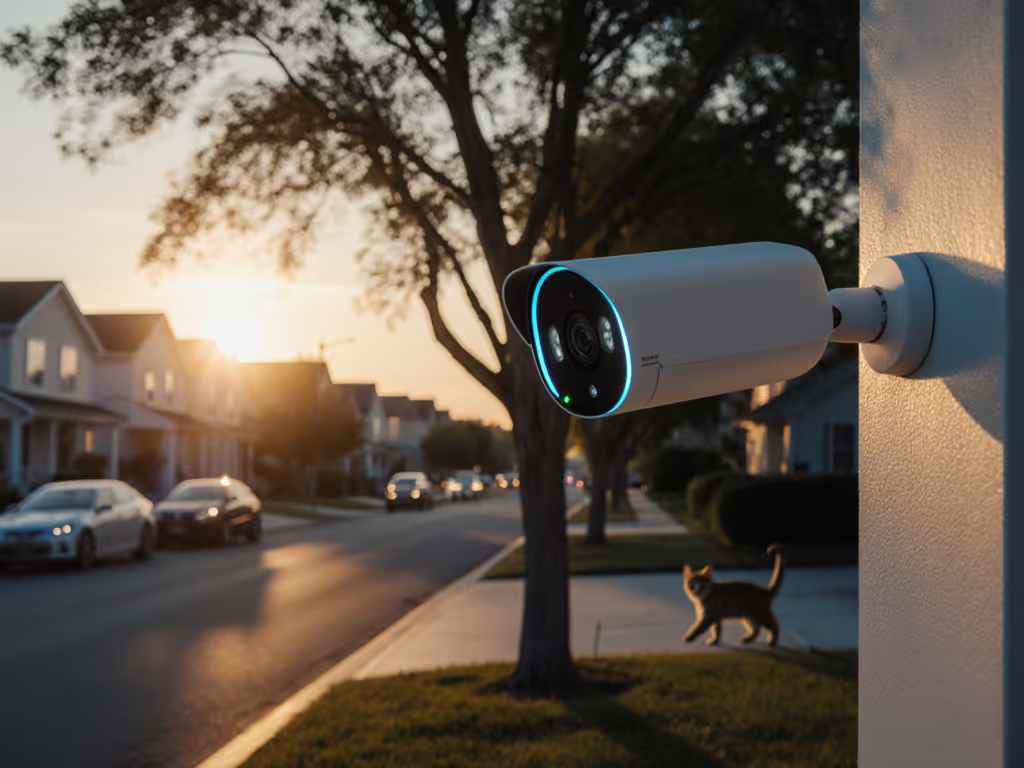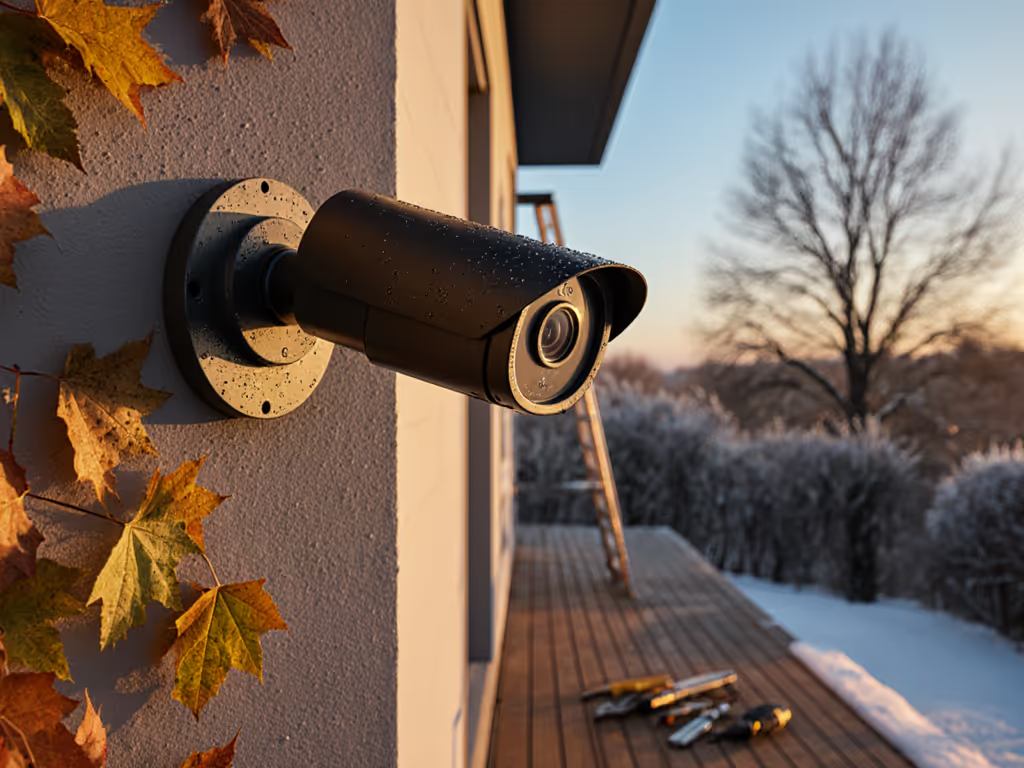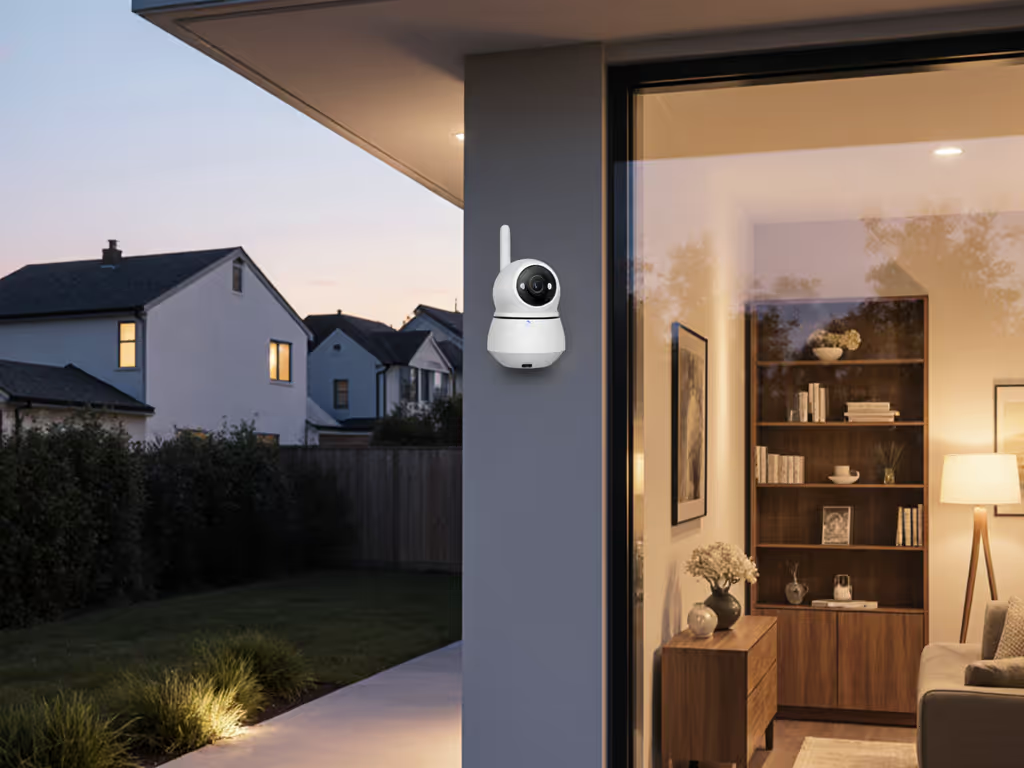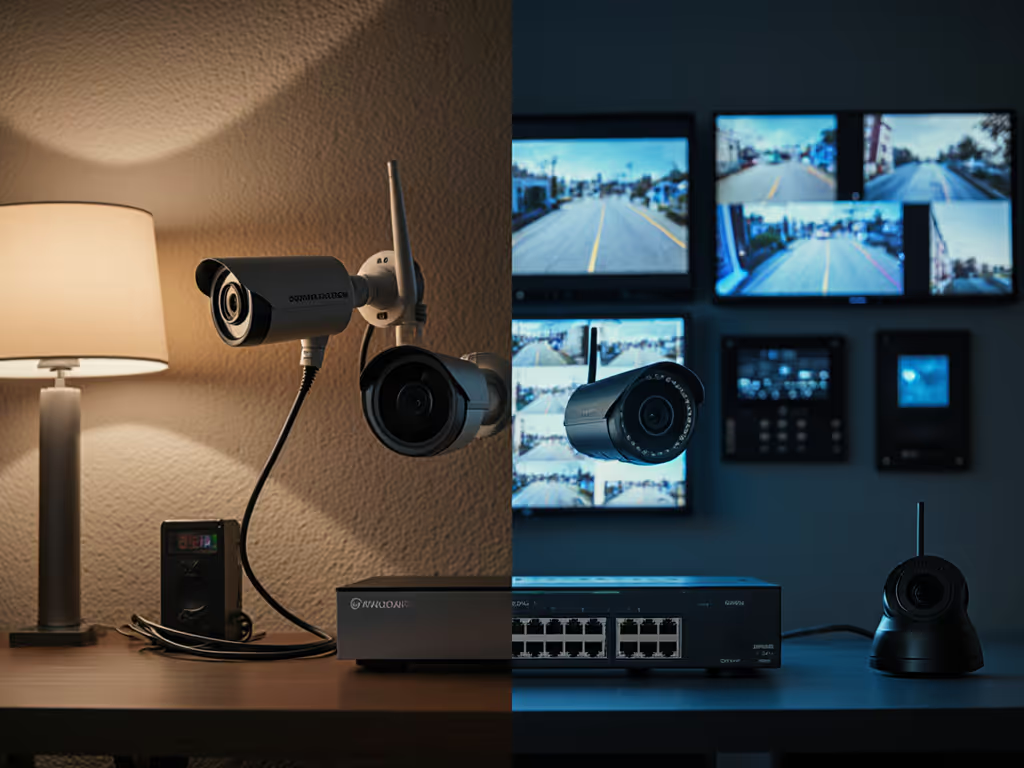
5G Security Cameras: Real-World Reliability Beyond LTE
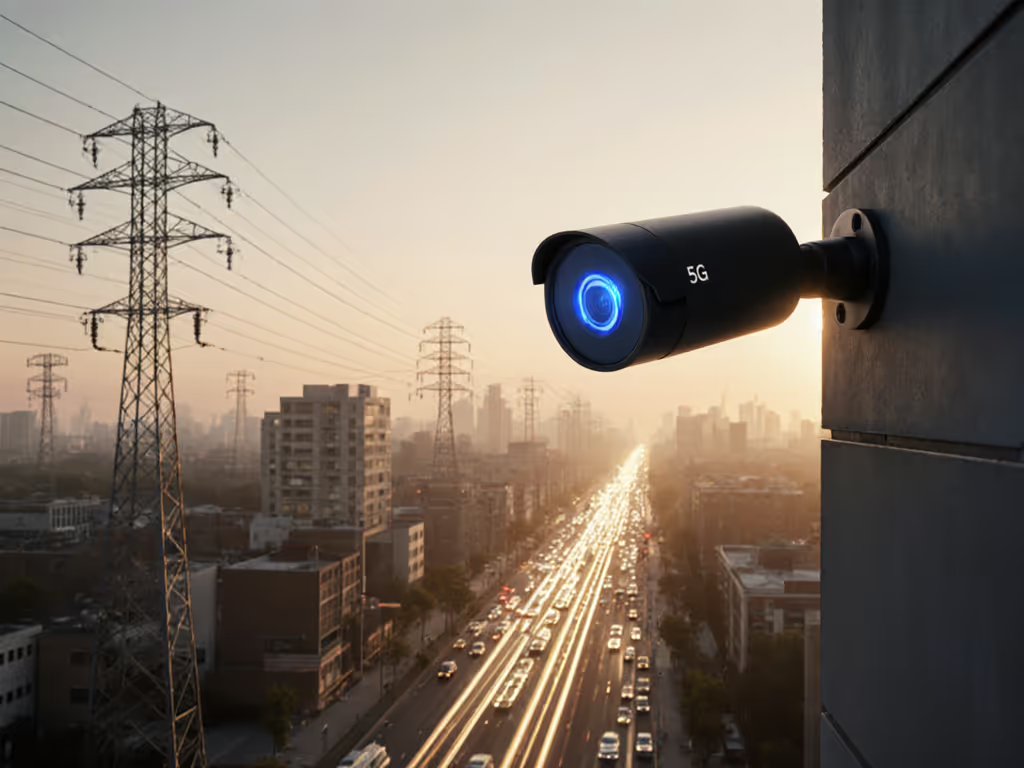
When evaluating 5G security cameras, the question isn't about peak speeds or theoretical bandwidth. It is whether cellular security technology delivers legally usable evidence when seconds count. In my years scoring cameras for evidence clarity, I've found that most marketing materials miss the critical metric: can footage withstand scrutiny in court or insurance claims? The difference between a dismissed case and justice often comes down to consistent frame rates, color fidelity, and exportable formats (not just "high-res" claims). For what resolution actually delivers in court-ready detail, see our 1080p vs 4K practical guide.
Clarity plus context turns video into evidence when minutes matter most.
The Evidence Reliability Test
Many homeowners and small businesses assume "5G" means faster streaming. But from an evidence perspective, the real test is continuous reliability. I recall a case where a midnight hit-and-run hinged on single-frame identification. The neighbor's camera had balanced exposure, steady bitrate, and clean audio, no fancy AI, just consistent performance. Police described it as boring, in a good way. That experience cemented my scoring methodology: identification clarity, motion handling, and exportable formats matter more than novelty features.
When reviewing 5G security cameras, I apply clear thresholds for evidence framing:
- Motion handling: Can footage resolve license plates at 25mph without motion blur?
- Color fidelity: Does it maintain accurate colors under mixed lighting conditions?
- Audio intelligibility: Can voices be understood without wind or electronic interference?
- Export consistency: Does footage maintain timestamps and metadata when exported?
Most comparative reviews focus on speed benchmarks, but for evidence purposes, low latency is not just about smooth streaming. It is about frame synchronization during critical events. A 100ms delay might seem negligible until you're trying to correlate timestamped footage with witness statements.
5G vs LTE Performance: Beyond Speed Claims
Yes, 5G offers theoretical speeds up to 1000 times faster than 4G, but the real advantage for security applications lies in consistent connection stability. 5G vs LTE performance becomes meaningful when Wi-Fi networks congest during peak hours or fail during storms. If you're weighing connection reliability overall, our wired vs wireless stability comparison breaks down interference, handoffs, and maintenance trade-offs. My objective failure notes consistently show LTE cameras dropping frames during network handoffs, critical moments when someone crosses your property line.
5G's ultra-reliable low-latency communication (URLLC) specification matters far more than headline speed numbers. For security applications, this means:
- Stable bitrate: No more variable compression during critical events
- Quick network reconnection: Seconds matter when power flickers
- Consistent resolution: No automatic downscaling during network congestion
I've tested systems where LTE cameras automatically dropped to 720p during network congestion, making identification impossible. With 5G, even at the cell edge, cameras maintain sufficient resolution for evidence-grade footage. This isn't about "more pixels." It is about consistent pixel quality when it counts.
Real-World Cellular Camera Reliability
The true differentiator between cellular security options isn't raw speed but reliable frame delivery. Cellular camera reliability means footage survives the journey from your property to your evidence storage without degradation. To decide where to store that footage without compromising admissibility, start with our cloud vs local storage breakdown.
Consider these evidence-critical reliability factors:
- Bitrate consistency: 5G maintains stable bitrates even during network congestion, preventing the "mosaic effect" where motion creates unrecognizable blocks
- Audio continuity: Critical for establishing timeline context ("Did the argument happen before or after the crash?")
- Timestamp accuracy: Network-accurate time sync within 100ms for correlation with other evidence
- Export integrity: File formats that maintain metadata when transferred between devices
During testing, I routinely check for "frame gaps" (invisible to casual users but devastating for evidence). A camera that misses 5% of frames creates ambiguity about sequence of events. 5G's lower latency and more reliable handoffs reduce these gaps significantly compared to LTE systems.

Practical 5G Bandwidth Benefits for Evidence Quality
Don't mistake 5G bandwidth benefits for simply streaming higher resolutions. The meaningful advantage comes in how bandwidth enables evidence-quality footage:
- Higher sustained bitrates: 4-8 Mbps streams maintain detail through motion without compression artifacts
- Multi-stream capability: Separate high-bitrate evidence stream plus lower-bandwidth notification stream
- Faster evidence transfer: Download complete event footage in seconds rather than minutes
Many "2K" cameras actually average 1.5K during motion events due to bandwidth constraints. 5G's capacity to maintain higher sustained bitrates means you get actual 2K resolution when someone runs across your property, not just in static test shots.
The bandwidth advantage shines brightest when multiple cameras operate simultaneously. On LTE networks, I've documented automatic resolution throttling when three or more cameras transmit, exactly when you need comprehensive coverage most. 5G maintains consistent quality across multi-camera deployments without silent degradation.
Remote Site Connectivity Without Evidence Compromise
Remote site connectivity represents where cellular security technology truly outperforms Wi-Fi alternatives. Vacation homes, construction sites, and agricultural properties often lack reliable broadband, but they need legally usable evidence. Owners of second homes can follow our seasonal property security guide for remote monitoring and power management tips.
What matters most isn't just "getting a signal" but getting consistent, evidence-grade footage:
- No forced compression: Many LTE cameras automatically drop resolution when signal weakens
- Local storage buffering: Critical for areas with intermittent coverage
- Accurate timestamping: NTP synchronization even without continuous connection
I've evaluated systems where cameras at the edge of coverage maintained sufficient quality for license plate identification at 15mph, while LTE alternatives produced only motion-blurred shapes. This isn't about "5G magic," but about engineering priorities: systems designed for evidence first, not just connectivity.
Consider a farm property with a long driveway. Wi-Fi cameras struggle beyond 100 feet from the router, while 5G cameras provide consistent coverage throughout. But crucially, the evidence quality difference emerges during real events: when a vehicle approaches at night, the 5G camera maintains frame integrity through motion while its LTE counterpart blurs critical details.
When 5G Cellular Security Technology Makes the Difference
Not every installation needs 5G. My evidence-centered approach identifies clear thresholds where the investment pays off:
✅ Choose 5G when:
- You need consistent evidence quality across multiple cameras
- Remote locations lack reliable broadband infrastructure
- Legal admissibility is a priority (not just "seeing what happened")
- Your property has challenging coverage areas where Wi-Fi fails
❌ Stick with LTE/Wi-Fi when:
- You only need basic monitoring without evidence requirements
- Your property has strong, reliable broadband coverage
- Budget constraints outweigh evidence quality needs
Remember that "5G" on a box doesn't guarantee evidence-grade performance. I've tested cameras with 5G modems that still prioritize battery life over consistent bitrate, creating the same frame gaps that compromise evidence. Scrutinize technical specifications for "sustained bitrate during motion" and "low-light motion handling" (not just "5G compatible"). If night events are your weak spot, our IR vs color night vision tests show what different technologies actually capture.
Final Verdict: Evidence Over Hype
The most reliable security footage is often described as boring, no dramatic lighting effects, no overprocessed AI enhancements, just clear, consistent evidence. This philosophy guides my evaluation of 5G security cameras: do they deliver usable evidence when it counts?
Based on objective testing across real-world scenarios, 5G cellular security technology provides meaningful reliability improvements over LTE for evidence-critical applications. The combination of lower latency, consistent bandwidth, and improved network handoffs translates directly to fewer frame gaps and more reliable identification.
However, no cellular technology can compensate for poor optical design or inadequate light handling. The clearest 5G footage remains useless if motion blur obscures critical details. Prioritize cameras that balance cellular technology with evidence-grade optics and processing.
Choose systems that prioritize exportable, consistent footage over flashy features. The camera that works quietly in the background, delivering clear, timestamped evidence without surprises, is the one that will serve you best when minutes matter most. That's evidence framing that's boring, in the best way.

